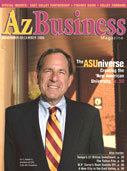Note: All fields are required.
from our blog
February 10, 2021
Seatback Failures
Front occupant seatbacks play a vital safety role in rear-end crashes, similar to the purpose of airbags and seatbelts in frontal impacts. In a rear impact, a front seat should be designed to absorb energy and contain the occupant in the front seating space. Weak, defective front seats can fail, collapse and cause front occupants […]

Fire Propagation Defects in Survivable Crashes
Fuel system design is critical to preventing fuel-fed fires during a car crash. A vehicle should be designed so that a fire outside of it should not have a ready pathway to enter the occupant compartment. However, auto manufacturers commonly create pathways by running wiring through the firewall of the engine compartment or creating holes in the body of the vehicle for venting purposes. Often, these holds are exceptionally large so that vehicles can be manufactured cheaper and faster, e.g., instead of a 1/2 inch diameter opening for a small grouping of wires, the manufacturer uses a 3 inch diameter opening.
The problem with creating holes in the engine firewall or in the body of the vehicle for venting purposes is that many times manufactures fail to take additional steps to make sure these openings are fire safe. In fact, many times the material used to seal the openings are a combustible rubber or plastic which serves as fuel for the potential fire. Fire resistant materials have long been used in other applications, e.g., homes, and should also be used in vehicles. These materials allow air to pass through unless exposed to heat or flame, at which time they melt to seal the opening and prevent fire and smoke propagation.
Pre-pandemic there were nearly 170,000 highway vehicles fires every year in the United States. Although this is less than other types of fires, vehicle fires are more likely to result in fatalities. Vehicles fires kill nearly seven people every week; cause 1,300 injuries every year; and $1.1 billion in property damage every year according to the U.S. Fire Administration. With these statistics, it only makes sense that manufacturers would, at a minimum, use fire resistant materials when creating holes in the engine firewall and body of the vehicle for venting purposes.

quick links
9375 E. Shea Blvd.
Suite 100
Scottsdale, Arizona 85260
Telephone 480-874-2918
Facsimile 480-588-5063
Mailing Address:
Post Office Box 12877
Scottsdale, Arizona 85267





 Subscribe by Email
Subscribe by Email Shane Harward
Shane Harward Find us on Facebook
Find us on Facebook

